Vegetable prices in traditional markets increased sharply.
According to the reporter of Cong Thuong Newspaper, at Pleiku night market (Dien Hong ward, Gia Lai province) and Dam market (Quy Nhon ward), the increase occurred in most groups of leafy vegetables, fruits and tubers.
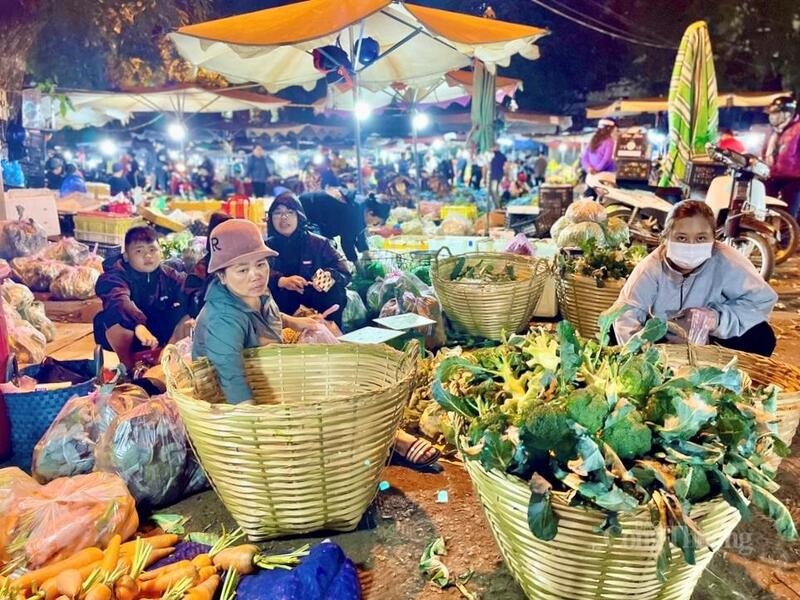
At traditional markets, the increase occurred in most groups of leafy vegetables, fruits and tubers. Photo: Hien Mai
At Pleiku night market (Dien Hong ward), the prices of many vegetables and fruits such as squash, tomatoes, and bell peppers increased by 10,000-15,000 VND/kg. According to some traders, large vegetable growing areas in Gia Lai province such as An Phu and An Khe were affected by heavy rain, causing a sharp decrease in output in the first two days after the storm.
“ Traders reported that there is very little left. Many gardeners did not have time to harvest before the storm, so now many of the products have been damaged and there is nothing to bring to the market, ” said Nguyen Thi Huong, a vendor at Pleiku night market.
Meanwhile, housewives have changed their shopping habits during the days when vegetable prices are high. Ms. Nguyen Thi Nhan (Pleiku ward) shared: "Usually, a bunch of water spinach costs about 5,000-6,000 VND, but now it is up to 15,000 VND. Hopefully, in the next few days, the price will decrease and stabilize when the supply is stable."
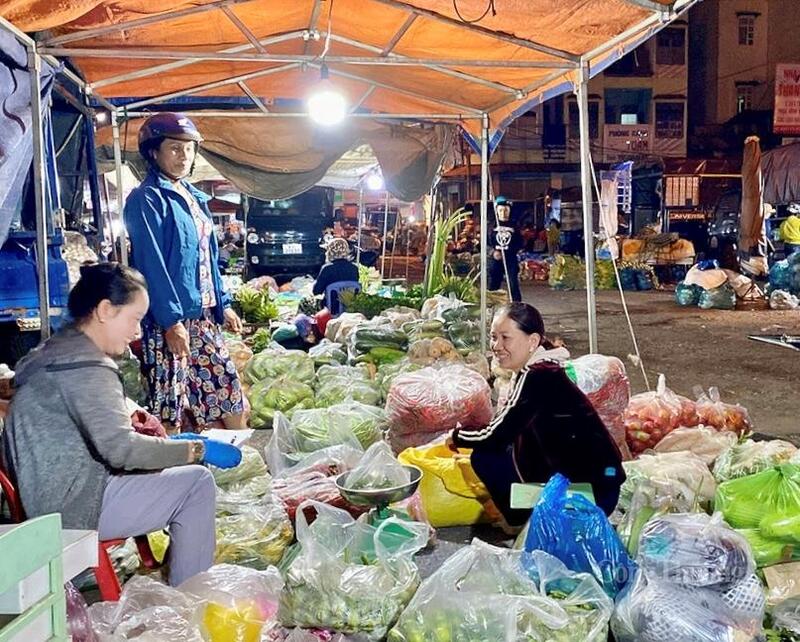
High vegetable prices also cause difficulties for small traders. Photo: Hien Mai
At Dam market, bitter melon is being sold for 70,000-80,000 VND/kg, a price that many traders consider “unprecedentedly high”. Green beans, cucumbers, and various vegetables range from 50,000 to over 60,000 VND/kg; lettuce and herbs have also increased by 20-30% compared to last week.
Ms. Nguyen Thi Thu, a vegetable vendor at Dam market, said: “These days, there are very few goods coming in, mainly from remaining gardens or from regular customers. The price at the source is already high, plus the transportation fee, so we have to sell at a higher price at the market. We don’t want to increase the price, but if there are no goods, we have to accept it.”
Supermarkets keep prices, supply does not fluctuate
In contrast to the price increase at traditional markets, vegetables at Co.opmart Quy Nhon Supermarket remain stable. The vegetable counter is full of varieties, and the listed prices have not changed compared to last weekend.
Mr. Nguyen Van Minh, Head of the Marketing Team of Co.opmart Quy Nhon Supermarket, said that the supermarket's supply was proactive in advance. " More than 70% of vegetables are supplied from Lam Dong and the rest from two vegetable regions, Thuan Nghia and Phuoc Hiep (Gia Lai). These are regions that are less directly affected by the storm, so the goods arrive regularly and in sufficient quantities. Thanks to that, the supermarket did not increase prices even though purchasing power increased quite strongly after the storm ," Mr. Minh shared.

Fresh vegetables and fruits are sold at the supermarket. Photo: Hien Mai
Mr. Minh said Co.opmart also reserves a large amount of goods in transit warehouses to cope with unusual weather, ensuring no disruption to supply.
Speaking to reporters, a representative of the Gia Lai Department of Industry and Trade said that immediately after the storm, the industry directed distribution units to increase reserves of essential goods, while closely checking and monitoring the listing and selling at the right price.
“ We request that distributors and supermarkets absolutely do not take advantage of the situation to unreasonably increase prices. At the same time, we coordinate with large production areas such as Lam Dong and Gia Lai to speed up harvesting and ensure smooth circulation of goods, ” the leader of the Department of Industry and Trade emphasized.
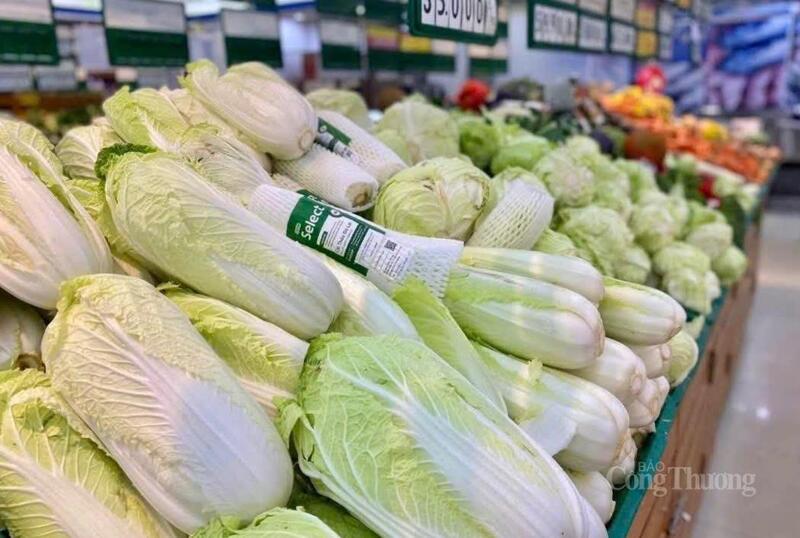
Thanks to reserves and stable supply, vegetable prices in supermarkets do not increase like in traditional markets. Photo: Hien Mai
Gia Lai Department of Industry and Trade also said that in addition to vegetables, the Department is closely monitoring the market developments of goods. If any cases of hoarding and price hikes are discovered, they will be handled according to regulations.
Localities are currently urgently restoring damaged vegetable areas and supporting farmers to replant short-term vegetables to quickly replenish supplies. Vegetable prices are expected to cool down in the next few days when supplies from major growing areas return to normal.
In Gia Lai province, storm No. 13 damaged more than 500 hectares of aquaculture area, over 590 cages and rafts were completely damaged; more than 2,184.64 hectares of rice were flooded (828.30 hectares were damaged by more than 70%); more than 14,978.58 hectares of flowers and vegetables were damaged; 4,543 hectares of perennial crops, 26,311 hectares of annual crops were damaged; 21,870 flower pots and ornamental plants were damaged and 19,236 shade trees and urban trees were knocked down and broken.
Source: https://congthuong.vn/gia-lai-gia-rau-cu-o-cac-cho-dan-sinh-tang-sau-bao-430418.html



![[Photo] Action for the Community tells stories of enduring journeys – both intimate and great, yet quiet and determined](https://vphoto.vietnam.vn/thumb/1200x675/vietnam/resource/IMAGE/2025/11/15/1763179022035_ai-dai-dieu-5828-jpg.webp)




















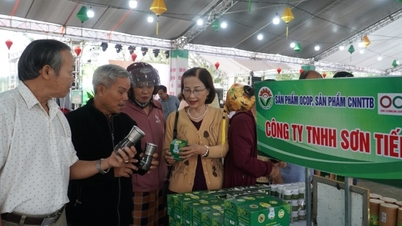
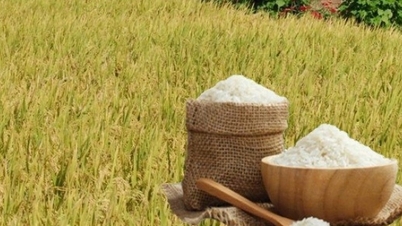





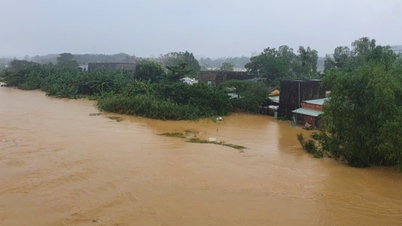












































































Comment (0)